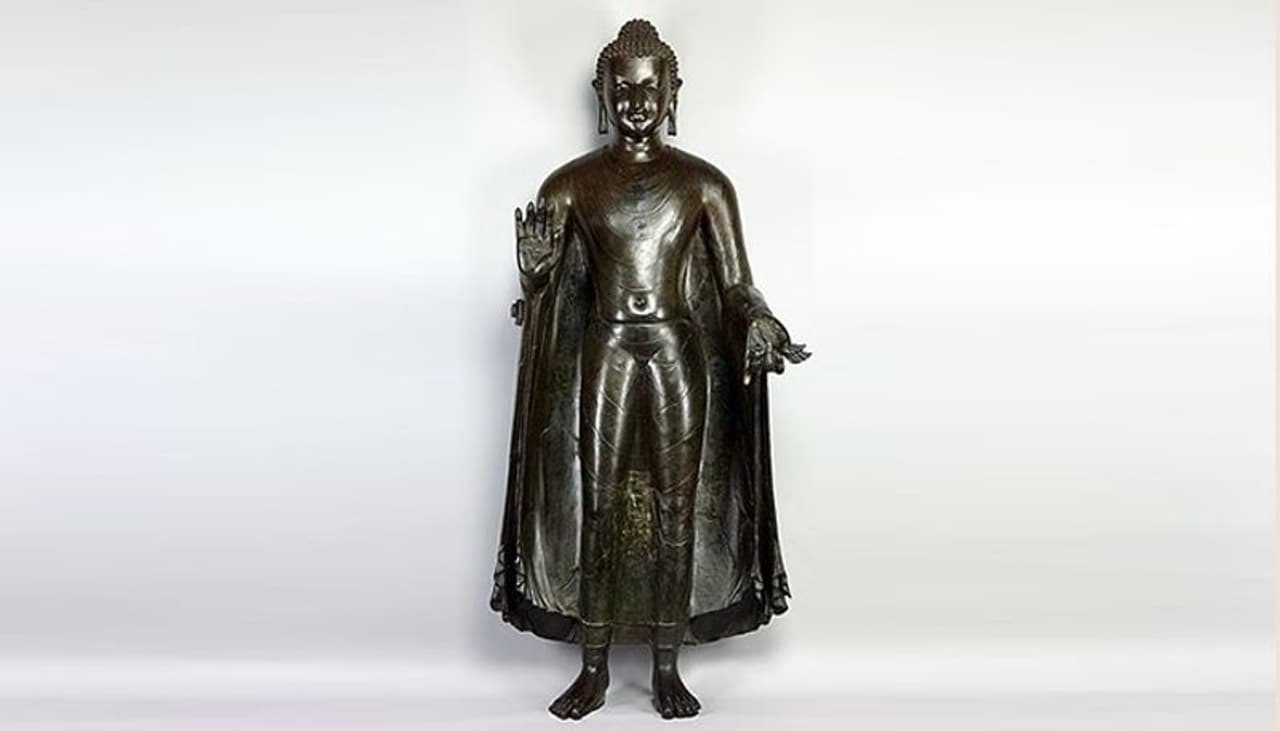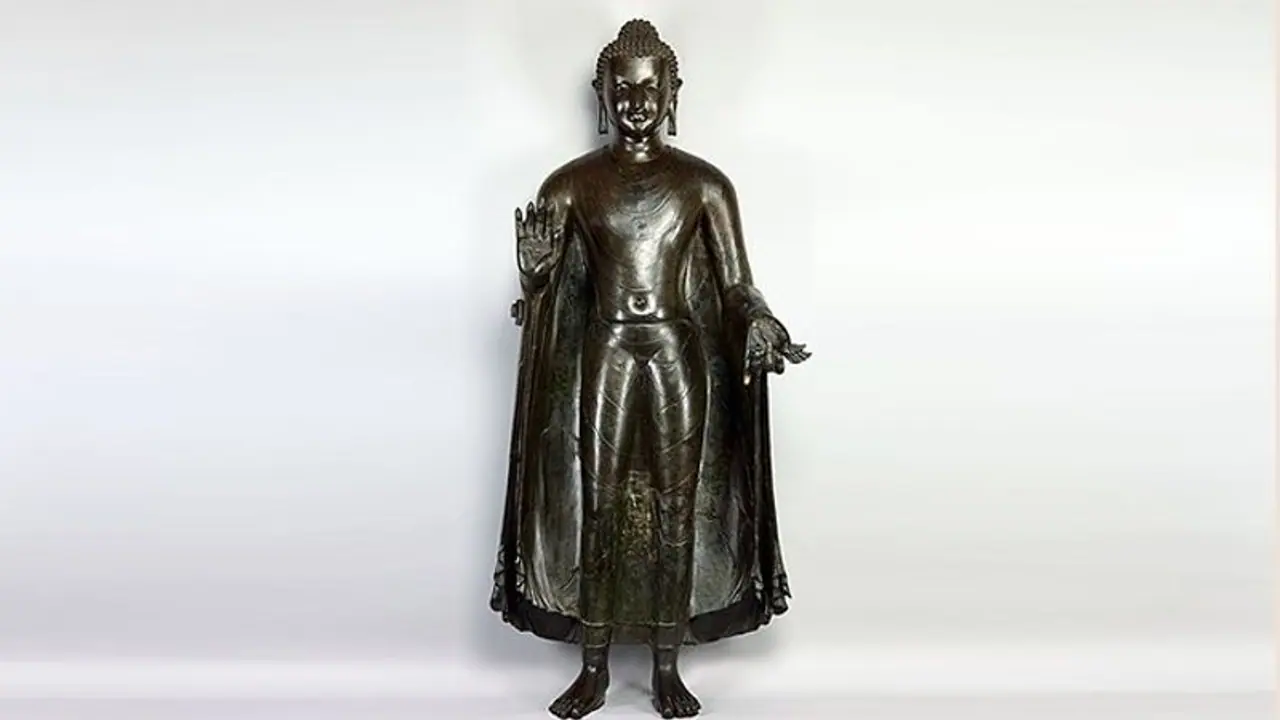The Sultanganj Buddha, now in Birmingham Museum, exemplifies Gupta art. It was found in 1862 during railway excavation work
Bengaluru: Since time immemorial, India has made a mark several fields. Be it science or arts, India has produced virtuosos who have been a guiding light for others.
Talking of the expertise in these fields, one can’t remain mute to the Sultanganj Buddha. The statute has Buddha in a standing posture and is a corroboration of the talent ancient India’s craftsmen and sculptors had.

It is 1500 years old and is made completely of copper. It weighs 500kgs and is 2.3m high. At its widest point, it is 1m. It was sculpted using the techniques of ‘lost wax’.
How it was found:
The story is certainly very interesting. It was the year 1862. Railway engineer EB Harris who was overseeing related work at Sultanganj, Bhagalpur district, Bihar discovered the prized possession. He was carrying out an excavation work on ancient remains near the Sultanganj station when he found it out.
But later, Birmingham metal manufacturer Samuel Thornton who, on hearing of the discovery, paid £200 to have it transported to Birmingham. In 1867 the Sultanganj Buddha was put on exhibition in the Museum.
BBC website adds that the statue now plays a new role in the museum's work with Buddhist communities in the city.
The work is a commentary on the Gupta style of sculpting.
A note on the posture:
In the sculpture, Buddha is seen in the Abhaya mudra or the pose of reassurance. This is exemplified with the help of his right hand.
On the other hand, his left palm is seen in a downward direction, which is symbolic of the wish that Buddha grants to his devotees.
He is also wearing robes, but they are almost invisible. But the robes are made visible, all thanks to the strings.
The statue signifies detachment and it is needless to say that it further signifies calmness.
